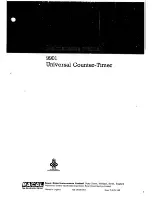
Operating Instructions
Contador
Page 12 of 40
Revision 6
© 2019 – Pfeuffer GmbH
Specialist
An individual who, on account of their relevant, specialist education, training and/or expertise is capable
of detecting risks and avoiding hazards that can arise when using the product.
(Definition in accordance with DIN EN 82079-1:2013-06)
Obligations of the operating company
In the European Economic Area (EEA), the national implementation of the framework
directive 89/391/EEC as well as the associated individual directives and, of which, in
particular the guideline 2009/104/EC »concerning the minimum safety and health
requirements for the use of work equipment by workers at work«, in each case in the
current version must be observed and complied with.
The local, legal provisions must also be complied with for:
Safety of personnel (accident prevention regulations)
Accident prevention regulation DGUV Regulation 3 (previously BGV A 3) »Electrical systems and
equipment« (DGUV = Association of German Statutory Accident Insurance)
Safety of work equipment (protective equipment and maintenance)
Product disposal (waste legislation)
Material disposal (waste legislation)
Cleaning (cleaning agents and disposal)
Hazardous substances (in Germany, the technical rules for hazardous substances – TRGS 555 apply)
Environmental protection regulations.
Electrical connections
The CONTADOR is only allowed to be connected to a socket earthed in accordance with
the regulations, using a protective conductor.
2.5
General safety instructions
The safety equipment and safety instructions described in these Operating Instructions
must be observed.
1.
In the case of a fault, disconnect the equipment from the mains.
2.
Always disconnect the equipment from the mains prior to cleaning.
3.
Do not allow the equipment to become wet during transport, storage, cleaning and
operation.
4.
Ensure that the CONTADOR is used only when it is in perfect condition.
5.
Never touch the mains cable with wet hands.
6.
Use only the original spare parts and accessory parts (
refer to chapter 10










































